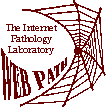|
A 43-year-old male truck driver who has been divorced for two years is driving a full load of wood products from Los Angeles to Dallas by himself. After a long hot day on the road, he decides to eat dinner at an interstate truck stop in a distinctly rural part of eastern New Mexico. While eating dinner at the counter, he is engaged in conversation by an unusually friendly young woman. Eventually, it becomes clear that this woman is a professional "escort" who is looking for some business. The woman appears to be on the desperate end of the escort business, as the proposed charge for services is very reasonable. The man's cargo is not time-sensitive, so he decides to avail himself of this unexpected opportunity. The escort has no entertainment facilities of her own, so they use his truck's sleeper cab. He is concerned about not taking precautions, but the escort assures him that she is not infected with an STD.
About one week later, the man notices that three papular lesions have formed on his penis. The area surrounding these lesions is erythematous. Over the next 2 to 3 days, the papules evolve into pustules, which then rupture and form sharply circumscribed ulcers that are painful and bleed easily if disturbed. By the time the man seeks medical help, two of these ulcers have coalesced to form a larger ulcer. The man's vital signs are normal. The physical examination reveals tender inguinal lymphadenopathy.
Question 5.1: What is your preliminary diagnosis?
The location of the ulcers and the man's recent history indicate that an STD is likely. Although it is not possible to make a definitive diagnosis from the symptoms alone, they are suggestive of chancroid. The differential includes syphilis, genital herpes, granuloma inguinale, and lymphogranuloma venereum (LGV). Pain is uncommon in syphilis and granuloma inguinale, whereas the lesions of genital herpes and LGV are usually superficial and very seldom bleed. Based on these distinctions, chancroid seems the most likely possibility (see Table 1, below).
Question 5.2: What is the causative agent?
The causative agent of chancroid is a bacterium named Haemophilus ducreyi, which is a Gram-negative coccobacillus. Because this organism has a fastidious metabolism, it is rather difficult to culture in the lab. Selective and supplemental media are usually required for this purpose.
Question 5.3: How is the diagnosis confirmed?
Gram staining of a swab of one of the lesions might reveal a predominance of the characteristic Gram-negative coccobacilli associated with this disease, but the presence of other bacteria often makes it difficult to interpret the results. A definitive diagnosis of chancroid depends on culturing of H. ducreyi from one of the lesions, in which case the lab must be told to look specifically for this organism. Because this is an STD, you may want to order tests for other common sexually transmitted pathogens as well, in order to eliminate the possibility of a mixed infection.
Question 5.4: What is the prevalence of this disease?
Chancroid is a common cause of genital ulcers in developing countries. Although less common, it is also endemic in some parts of the U.S. and several large outbreaks have occurred since 1981. The incidence of chancroid in the U.S. will undoubtedly increase in coming years. Chancroid is the third most frequent cause of genital ulcers in the U.S (after genital herpes and syphilis).
Question 5.5: How is this disease transmitted?
Transmission is by direct sexual contact. Transmission is predominantly heterosexual, and prostitutes have been important in transmission of the disease. The disease occurs more frequently in men than in women, with the male:female infection ratio ranging from 3:1 to 25:1. Symptomatic infections are rare in women. Chancroid has been strongly associated with illicit drug use.
Question 5.6: How is this disease connected to AIDS?
Chancroid is associated with HIV infections because of the role of genital ulceration in the transmission of HIV. The lesions provide an opening for blood-to-blood transfer of the virions during intercourse, thereby rendering a chancroid victim more susceptible to HIV. This is thought to be a highly significant factor in the transmission of AIDS in Africa and other areas where chancroid is common and where AIDS is frequently transmitted during sexual intercourse involving prostitutes. Chancroid also plays a role in HIV transmission in the U.S. and may become increasingly important in this regard over the next few years.
Question 5.7: How is this disease treated?
Several regimens have proven to be effective, including: azithromycin (1 g PO single dose), ceftriaxone (250 mg IM single dose), ciprofloxacin (500 mg PO bid x 3 days), or erythromycin (500 mg PO qid x 7 days). (Ciprofloxacin is contraindicated in patients who are pregnant, lactating, or less than 18 years of age.) Patients should be reexamined 3 to 7 days after initiation of antimicrobial therapy. Ulcers should improve symptomatically within 3 days and objectively within 7 days after initiation of successful therapy.
| 


